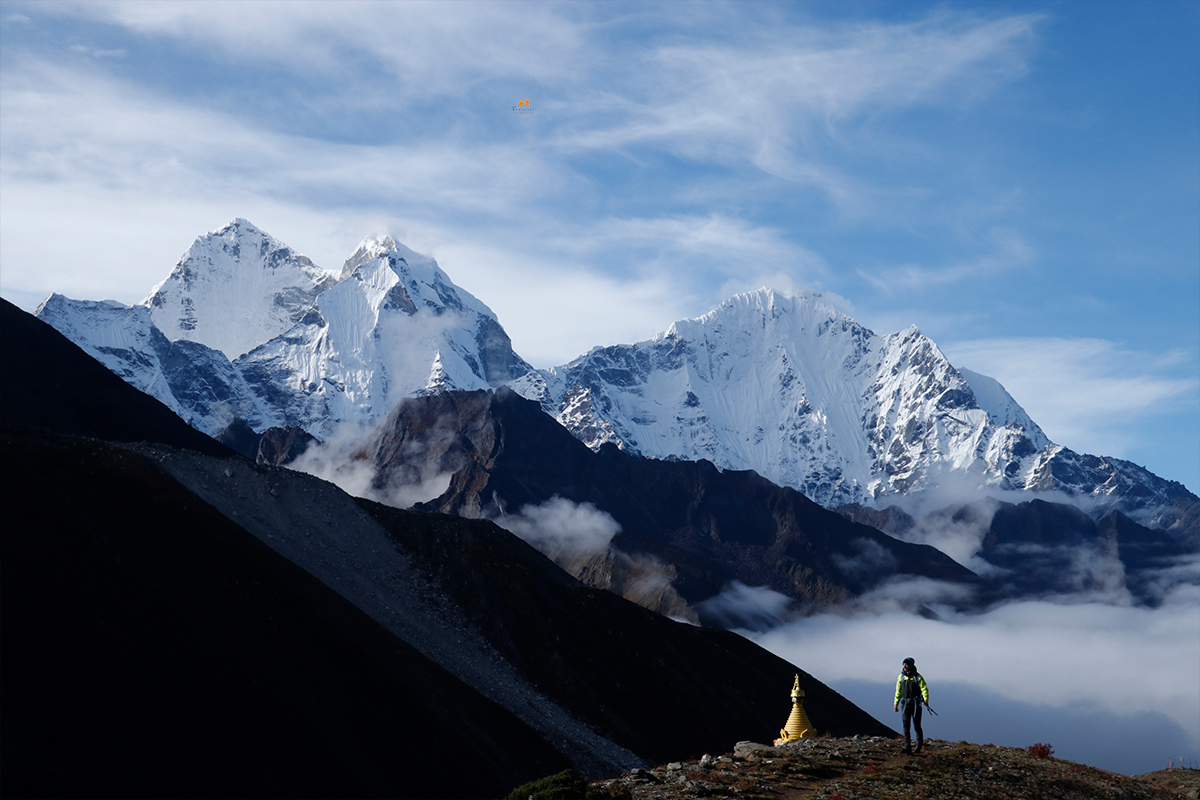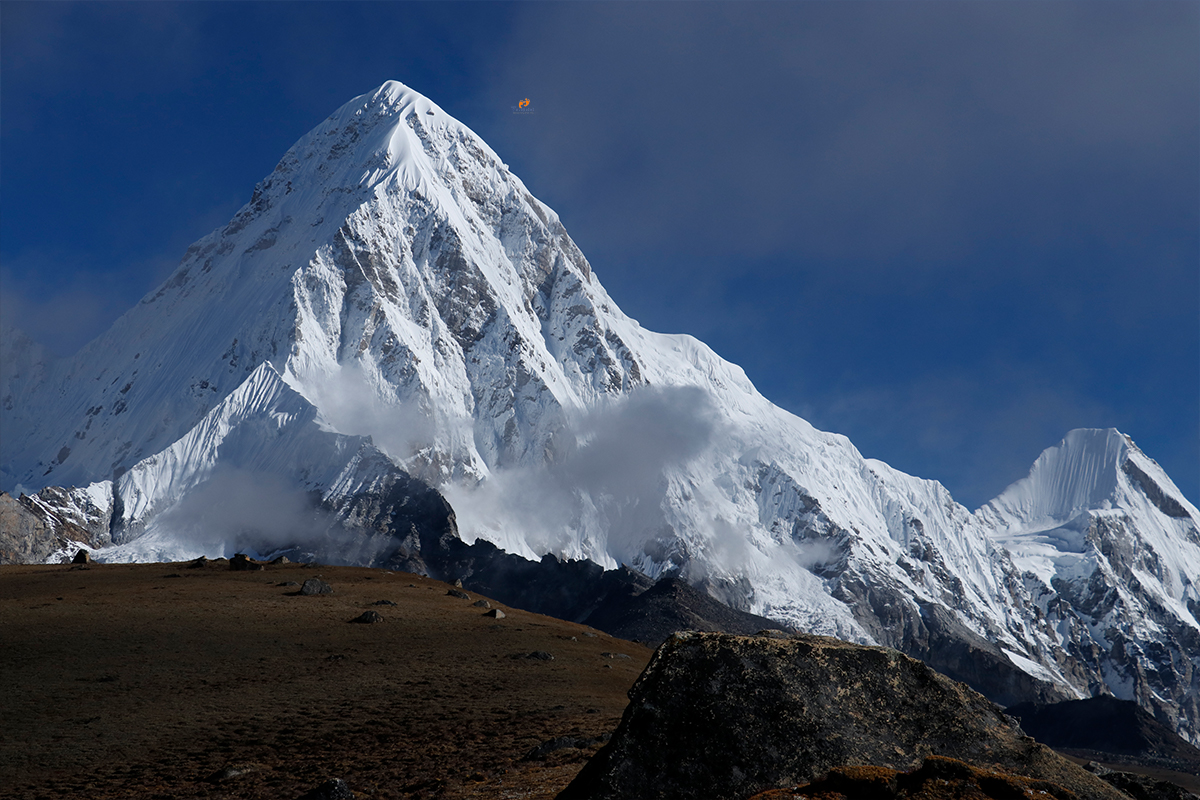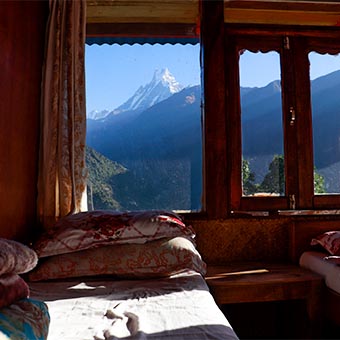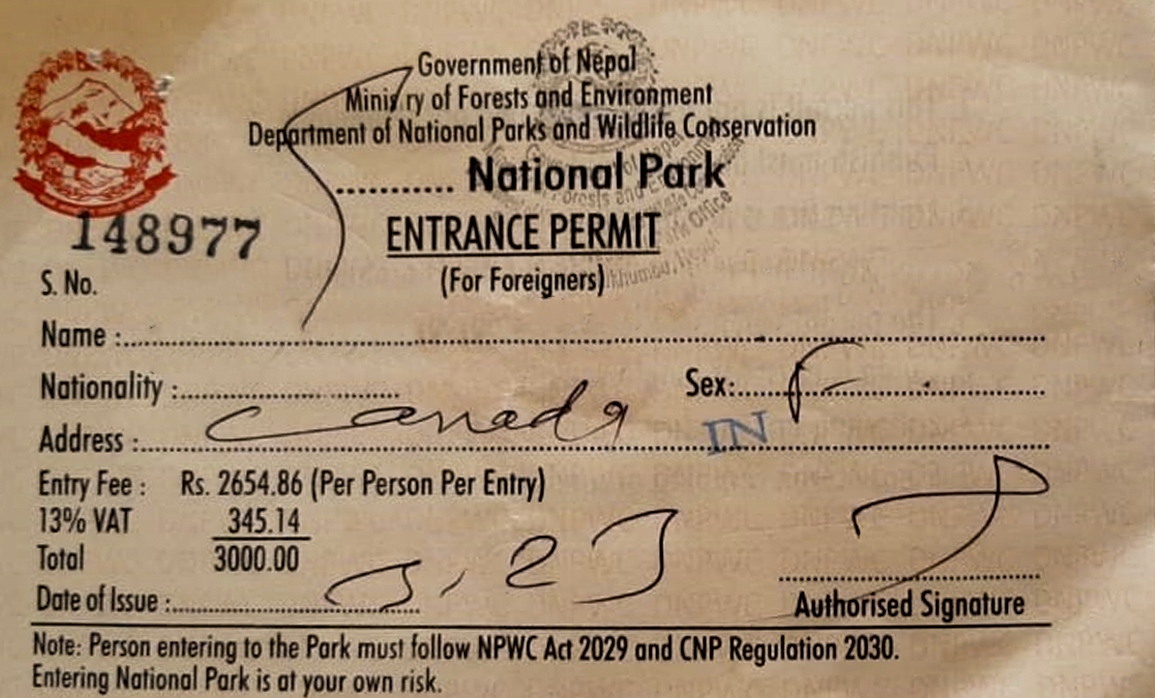Trek to Everest Base Camp: Short Overview
The Everest Base Camp Trek represents the ultimate adventure dream for anybody wishing to get near and closer to the world's highest mountain, Mount Everest. It is an exhilarating walk through incredible landscapes, small Sherpa villages, and ancient monasteries. It is challenging but rewarding, bringing you up to 5,364 meters on Everest Base Camp.
The Everest Base Camp trek route covers a total of about 130 kilometers of the Everest Base Camp trek distance, giving you plenty of time to enjoy the views. With many Everest Base Camp trek packages available, planning the right trip for you is possible. It is a lifetime experience full of beauty and achievements.
What to expect on this once-in-a-lifetime journey

1. Breathtaking Sights
During the treks, you get sights of snow-capped white peaks, glaciers, and rugged landscapes that defy description. From lush green thickets of forests to ice trails, the scene changes at every step of your memory.
2. High-Altitude Adventure
Everest Base Camp's challenging and exhilarating reach is at an altitude of 5,364 meters, testing your endurance and determination. The thin air and breathtaking views remind you that you're on a journey like no other.
3. Sherpa Hospitality
Comfortable overnight stay in teahouses along the way and enjoy Sherpa Hospitality, famous for its politeness and friendliness. The local food is very palatable, and native inhabitants tell many stories.
3. Diverse Landscapes
Various landscapes can be expected, from the dense forests and flowing rivers to the rock-filled paths and steep climbs to EBC. The suspension bridges and rugged trails make the route exciting and adventurous.
4. Unpredictable Weather
Be prepared for unexpected changes in weather conditions that range from bright sunny mornings to chilly evenings and, at times, snowfall at higher altitudes. Proper preparation will help you enjoy the beauty of the climb without discomfort.
5. Personal Growth
The climb challenges you both physically and mentally, helping you build resilience and confidence along the way. Overcoming these challenges leaves you with lasting memories and a true sense of achievement.
Top 10 Things to Explore During Your Everest Base Camp (Must Read)
Best Time to Trek to Everest Base Camp
Spring (March to May)
Spring is one of the best times to trek to EBC, with clear skies, mild temperatures, and rhododendrons in bloom adding color to the trails. The daytime temperatures range from 10°C to 15°C; at night, it can drop to -5°C at higher altitudes.
The stable weather offers crystal-clear views of Everest and the surrounding peaks. The trails are buzzing with trekkers, hence energetic and lively.
Autumn (September to November)
Autumn is known for its clear skies with good visibility, making climbs in the Himalayas easy. Daytime temperatures start from 8°C - 12°C while lower nights at high altitudes tend to get to about -10°C.
Beautiful weather with no clouds provides views of Everest, which can be phenomenal. That is why most think it's the best time of the year, offering spectacular walks on relatively good trails as the surrounding countryside makes a brilliant turn into hues of gold.

Winter (December to February)
Winter trekking gives way to fewer crowds, freezing temperatures, and snow-covered paths. The peace and stunning winter landscapes it offers are unparalleled. During the daytime, temperatures lie at around 5°C; nighttime temperatures can dip to -15°C or lower, depending on the altitude.
The clear skies are pretty awesome for the peaks draped in snow, but that requires a lot of heavy gear and preparation. If you can handle the cold, winter offers a quieter and serene experience at EBC.
Monsoon (June to August)
The heavy rain in the monsoon season results in slippery trails, while the visibility of views remains minimal at lower altitudes. Daytime temperatures remain pretty warm at 12° C to 18° C, while nighttime temperatures are about 5° C.
Lower elevation regions are adorned with greenery; it may appeal to adventurous, experienced trekkers looking for quiet trails. Nevertheless, the frequency of rainfall and clouds obscures the view for the most part.
The Route to Everest Base Camp
Everest Base Camp Trek Itinerary
Day 1: Arrival in Lukla & Trek to Phakding [2,860m to 2,610m | 3-4 hours]
Day 2: Trek to Namche Bazaar [2,610m to 3,440m | 5-6 hours]
Day 3: Acclimatization Day in Namche Bazaar [3,440m | Exploration day]
Day 4: Trek to Tengboche [3,440m to 3,860m | 5-6 hours]
Day 5: Trek to Dingboche [3,860m to 4,410m | 5-6 hours]
Day 6: Acclimatization Day in Dingboche [4,410m | Exploration day]
Day 7: Trek to Lobuche [4,410m to 4,910m | 5-6 hours]
Day 8: Trek to EBC & Return to Gorak Shep [4,910m to 5,364m | 6-8 hours]
Day 9: Hike to Kala Patthar & Trek to Pheriche [5,164m to 5,545m, descend to 4,240m | 7-8 hours]
Day 10: Trek Back to Namche Bazaar [4,240m to 3,440m | 6-7 hours]
Day 11: Trek to Lukla [3,440m to 2,860m | 6-7 hours]
Day 12: Fly Back to Kathmandu [2,860m | 30 minutes]
Featured Trip:Destination Wedding At Everest Base Camp
Must-See Locations
- Namche Bazaar: A lively Sherpa town, ideal for acclimatization, souvenir shopping, or sipping a cup of coffee overlooking the mountains.
- Tengboche Monastery: The spiritual center of Khumbu, offering serene surroundings and panoramic views of Ama Dablam and Everest.
- Everest View Hotel: A short hike from Namche, this hotel offers one of the best viewpoints of Mount Everest and nearby peaks.
- Kala Patthar: The ultimate viewpoint at 5,545 meters provides Mount Everest's most iconic and close-up view, especially at sunrise.
- Memorial Sites at Thukla Pass: A moving tribute to climbers who lost their lives on Everest, set against towering peaks.
- Everest Base Camp: The highlight of the climb, where you stand at the foot of the world's highest mountain and celebrate your achievement.
How to Prepare for the EBC Trek
Physical Fitness and Training Tips for All Experience Levels
- Build Stamina with Cardio: Build up your stamina: Aerobic exercises such as running, cycling, or swimming can help one get their cardiovascular fitness in shape. Get 30-60 minutes of cardio 4-5 times a week.
- Strengthen Your Legs: Build strong leg muscles by incorporating exercises like squats, lunges, and step-ups for navigating steep ascents and descents. Hiking with a weighted backpack will also help train under simulated trekking conditions.
- Hike with Elevation: Try hiking on a trail with an elevation to orient your body to uphill climbing. Try easier hikes first and gradually make them longer and more challenging.
- Core and Balance Exercises: A strong core helps maintain stability on uneven trails. Add planks, leg raises, and balance exercises to your routine to build endurance and stability.
- Practice with a Backpack: Carry a loaded backpack (similar to what you’ll carry on the climb) to get accustomed to the weight. Increase the load gradually to avoid strain on your shoulders and back.
- Stay Consistent and Start Early: Starting early, at least 8-12 weeks before the climb, will help one build up their fitness. Consistency is key in ensuring that one is well prepared for such physical demands of the climb. For more details, click here.
Read Blog: Difficulty Level of Everest Base Camp Trek
Essential Gear and Packing List for a Successful Trek

- Clothing (layers: moisture-wicking base, insulating mid-layers, waterproof outer layer)
- Durable waterproof trekking boots with ankle support
- Sleeping bag rated for temperatures as low as -20°C
- Adjustable trekking poles
- Comfortable, well-fitted backpack (30-40 liters)
- Refillable water bottles and hydration system
- Sunscreen (high SPF) and UV-protective sunglasses
- First aid kit (bandages, antiseptic, painkillers, personal medications)
- High-energy snacks (nuts, energy bars, dried fruits)
- Headlamp with extra batteries
- Lightweight gloves and hat for cold weather
- Gaiters to protect from snow and dust
- Camera or smartphone for photos
- Personal hygiene items (toothbrush, wet wipes, etc.)
- Trekking map and permits
- Power bank for electronics
- Insect repellent
For detailed overview, read blog: What to pack for Everest Base Camp Trek
Acclimatization: Why It Matters and How to Avoid Altitude Sickness
- Gradual Ascent: The key to avoiding altitude sickness is to ascend slowly, allowing your body time to adjust to the decreasing oxygen levels. Follow the "climb high, sleep low" principle by trekking to higher altitudes during the day and returning to lower elevations to sleep.
- Rest Days: Acclimatization days are crucial, especially in Namche Bazaar and Dingboche. Use these rest days to explore the surrounding areas while staying at lower elevations to give your body time to adjust.
- Hydrate Well: Drink plenty of water throughout the climb, as dehydration can exacerbate altitude sickness symptoms. Aim for at least 3-4 liters per day.
- Eat Well: Nutritious, high-energy food can help keep your strength up. Good nutrition helps your body adjust to the higher elevation.
- Watch for Symptoms: Listen to your body for early signs of mountain sickness, such as headache, dizziness, nausea, or fatigue. If the symptoms persist or worsen, go down and seek medical help if necessary.
- Consult a Doctor: Before the climb, check with a healthcare professional to discuss any preventive medications, such as Diamox, that can help reduce the risk of altitude sickness.
Featured Trip: Everest Base Camp Heli Tour With Breakfast
Accommodation, Food, and Facilities on the Trail
Accommodation Along the EBC Trek
Accommodation on the EBC trek is mainly in teahouses, offering basic yet comfortable rooms with wooden beds and blankets. These teahouses provide a welcoming atmosphere for trekkers, though the facilities may be more basic as you ascend. Hot showers are available in some areas, but they often cost additional. Rooms get more minimalistic higher up, and heating may be limited.
It's best to book in advance during peak seasons like spring and autumn, especially in the popular spots of Namche Bazaar and Gorak Shep. Expect shared bathrooms and simple, cozy environments focusing on comfort after a long climb.
Food Along the EBC Trek
Food on the EBC Trek consists mainly of Nepalese cuisine, with dal bhat, momos, and thukpa being quite common. Most teahouses serve familiar Western dishes such as pasta, sandwiches, and pancakes, mainly at higher altitudes. The meals are usually carbohydrate-loaded, which is needed for the energy required for the climb.
For breakfast, hot drinks, such as tea, coffee, and hot lemon, keep you warm during the chilly morning and evening. The food is very simple but filling and nutritious for the demanding climb. Bottled water and boiled water can be easily bought for proper hydration.
Facilities Along the Trail

Facilities along the EBC trek are simple but provide the essentials for trekkers. Most teahouses have electricity from solar panels or generators, but it is usually in limited supply. It is also possible to charge electronic devices at charging stations for an extra fee. Wi-Fi is available in some areas, such as Namche Bazaar.
Still, the connection can be slow due to the remote location. Satellite phone services are available for emergency contact, though it may also come with a fee. Restrooms are typically squat toilets, and while most teahouses have showers, they are often cold at higher elevations.
Everest Base Camp Trek Cost and Permits
Budget Breakdown
- Flights: Round-trip flights from Kathmandu to Lukla cost approximately $150 to $250 each way, depending on the airline and season.
- Guides: Hiring a guide typically costs $20 to $30 daily, ensuring safety, local insights, and assistance during the climb.
- Porters: Hiring a porter costs around $15 to $20 daily, helping carry your gear and reducing physical strain during the climb.
- Accommodation: Teahouse accommodation along the route costs about $5 to $10 per night, with prices rising at higher altitudes or popular locations.
- Meals: Meals at teahouses range from $5 to $10 per dish, with prices increasing the higher you go, especially in more remote areas.
- Additional Costs: Include tips for guides and porters, travel insurance, and emergency evacuation, which can add several hundred dollars to your budget.
Required Permits

TIMS (Trekkers' Information Management System) Card
This TIMS card costs approximately $20 and is compulsory for all trekkers in Nepal. It's issued as a way of making sure that the trekkers are traced wherever they are. It is also important in cases of emergencies or search operations. It is available through registered trekking agencies or directly at the Nepal Tourism Board in Kathmandu.
Sagarmatha National Park Entry Permit
The Sagarmatha National Park Entry Permit is US$30 and is required to enter the national park. This permit contributes to the region's conservation and gives trekkers access to the Everest Region. It can be obtained either in Monjo, near the park entrance, or at the Nepal Tourism Board in Kathmandu. Keep this permit with you always during the trek.
Conclusion
The EBC Trek is an unforgettable adventure offering breathtaking views, cultural experiences, and a sense of achievement. Preparation and awareness about the demands of the trek will make the journey safe and enjoyable for any first-timer or seasoned trekker.
At Footprint Adventure, we can guide you through all technical aspects and support your desire for personal packages to help you reach EBC and explore as much of the Himalayas adventure as possible. The time and energy it will take, combined with planning and having the right permit, will get you going on this once-in-a-lifetime trek.
Complete Guidebook For Everest Base Camp Trek
FAQs
What is the best time to trek to EBC?
The best time to trek to EBC is from spring-March to May and autumn-September to November. These months offer stable weather conditions, clear skies, and mild temperatures. This ensures better visibility of the stunning Himalayan landscapes with minimal disruptions caused by bad weather.
Do I need a guide to trek to EBC?
While it's possible to trek to EBC independently, the safest option is to employ a guide's services. Guides have great, useful local knowledge, provide much smoother trekking, and are especially helpful in adapting to altitude changes. They also give support during emergencies and are of big help in approaching the different communities along the route.
How difficult is the trek to EBC?
EBC's high altitude and rugged terrain make it a moderately challenging trek; however, it is manageable for most people with reasonably good physical health. The risk of altitude sickness is an added difficulty; thus, proper acclimatization is important. Proper preparation, including physical conditioning, will make the trek more manageable and enjoyable.
How much does the EBC trek cost?
The trek cost would vary based on several factors: the cost of flights, guide services, permits, and accommodation. It can vary from $1,000 to $2,500 on average, depending on what kind of package you pick up. This includes all transportation, food, accommodations, and any extra service like a porter or guide.
What permits do I need for the trek?
You’ll need two essential permits for the EBC trek: the TIMS (Trekkers' Information Management System) card and the Sagarmatha National Park Entry Permit. The TIMS card costs around $20 and is necessary for registration, while the Sagarmatha National Park Permit costs approximately $30 and grants access to the park.
How long does it take to trek to EBC?
It usually takes 12 to 14 days to trek to the Base Camp of Everest, depending on speed and schedule. More days are needed due to acclimatization or adjustment to high altitude, which saves a person from altitude sickness. Some trekkers can extend it by keeping more rest days or making an extra visit to nearby areas.

.jpg)





